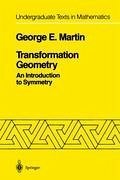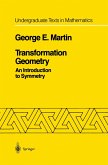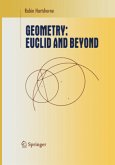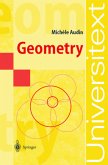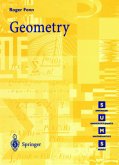Transformation Geometry: An Introduction to Symmetry is a modern approach to Euclidean Geometry. This study of the automorphism groups of the plane and space gives the classical concrete examples that serve as a meaningful preparation for the standard undergraduate course in abstract algebra. The detailed development of the isometries of the plane is based on only the most elementary geometry and is appropriate for graduate courses for secondary teachers.
Transformation geometry is a relatively recent expression of the successful venture of bringing together geometry and algebra. The name describes an approach as much as the content. Our subject is Euclidean geometry. Essential to the study of the plane or any mathematical system is an under standing of the transformations on that system that preserve designated features of the system. Our study of the automorphisms of the plane and of space is based on only the most elementary high-school geometry. In particular, group theory is not a prerequisite here. On the contrary, this modern approach to Euclidean geometry gives the concrete examples that are necessary to appreciate an introduction to group theory. Therefore, a course based on this text is an excellent prerequisite to the standard course in abstract algebra taken by every undergraduate mathematics major. An advantage of having nb college mathematics prerequisite to our study is that the text is then useful for graduate mathematics courses designed for secondary teachers. Many of the students in these classes either have never taken linear algebra or else have taken it too long ago to recall even the basic ideas. It turns out that very little is lost here by not assuming linear algebra. A preliminary version of the text was written for and used in two courses-one was a graduate course for teachers and the other a sophomore course designed for the prospective teacher and the general mathematics major taking one course in geometry.
Transformation geometry is a relatively recent expression of the successful venture of bringing together geometry and algebra. The name describes an approach as much as the content. Our subject is Euclidean geometry. Essential to the study of the plane or any mathematical system is an under standing of the transformations on that system that preserve designated features of the system. Our study of the automorphisms of the plane and of space is based on only the most elementary high-school geometry. In particular, group theory is not a prerequisite here. On the contrary, this modern approach to Euclidean geometry gives the concrete examples that are necessary to appreciate an introduction to group theory. Therefore, a course based on this text is an excellent prerequisite to the standard course in abstract algebra taken by every undergraduate mathematics major. An advantage of having nb college mathematics prerequisite to our study is that the text is then useful for graduate mathematics courses designed for secondary teachers. Many of the students in these classes either have never taken linear algebra or else have taken it too long ago to recall even the basic ideas. It turns out that very little is lost here by not assuming linear algebra. A preliminary version of the text was written for and used in two courses-one was a graduate course for teachers and the other a sophomore course designed for the prospective teacher and the general mathematics major taking one course in geometry.

